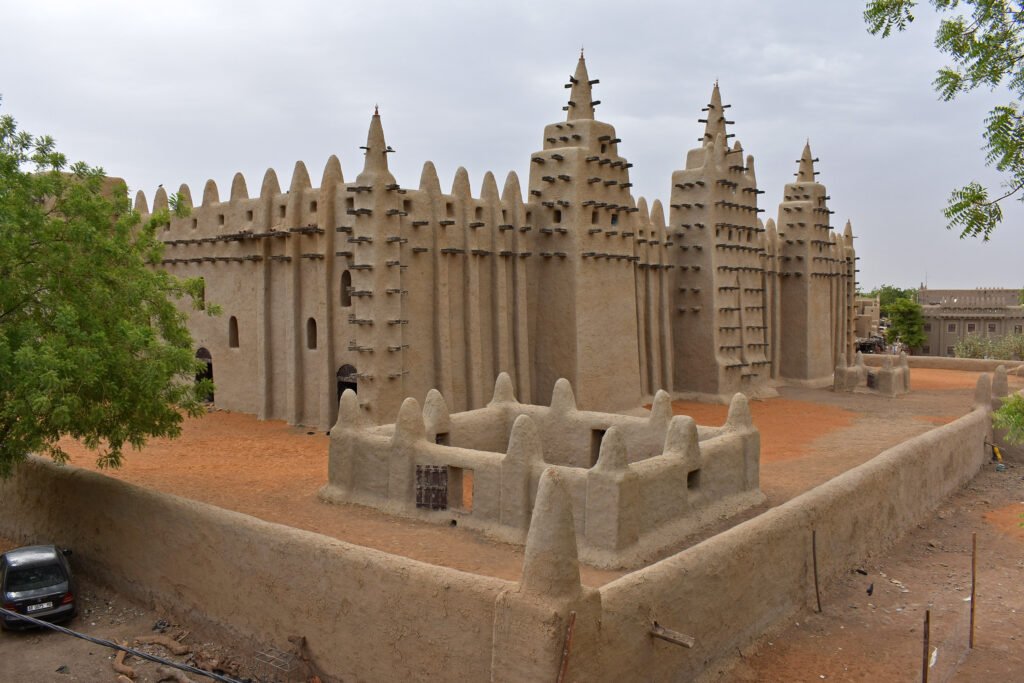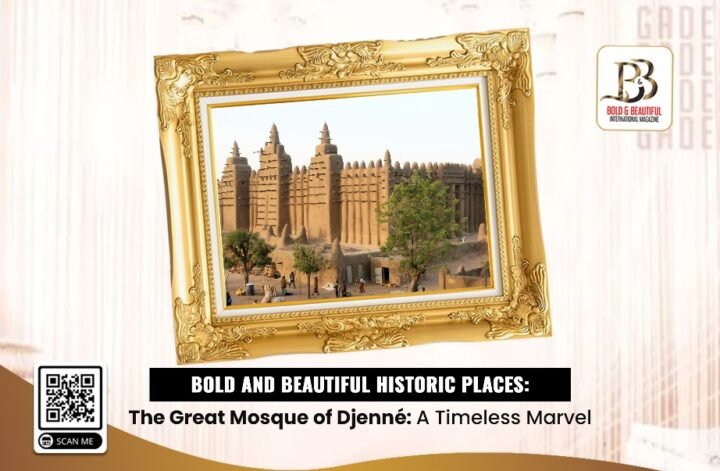The Great Mosque of Djenné, in Mali, originally erected between the 13th and 14th centuries, is the city’s rich Islamic heritage and its historical significance in trans-Saharan trade. This architectural masterpiece has prospered alongside the city, nurturing a thriving community of Islamic scholars from surrounding Koran schools. The current structure, rebuilt in 1907, rose from the ruins of an earlier mosque that fell into disrepair during the Fulani Empire’s early 19th-century reign. Recognized for its cultural value, the mosque was designated a UNESCO World Heritage Site in 1988.

The mosque’s qibla wall, an essential feature of Islamic architecture, faces Mecca, guiding worshippers during prayers. The three central minarets, crowned with ostrich eggs—symbols of creation and resurrection—stand tall, with the central minaret housing a special room for the crier to relay the Imam’s words to the congregation gathered outside. The mosque’s entrance, historically reserved for the Djennenké elite, remains a symbol of the city’s enduring traditions, though it now welcomes all visitors.

Within the mosque’s outer courtyard lies a tomb containing the remains of Imam Almany Ismaïla, a revered figure from 18th century Djenné. The mosque’s interior, supported by 90 pillars, offers a vast, simple space that remains cool even in the summer months, thanks to its thick adobe walls and efficient ventilation systems. This design not only provides a comfortable environment for worshippers but also reflects the ingenuity of traditional Sahelian architecture.

The current Imam of the Great Mosque, Yelpha Djeité, embodies the convergence of Islam, scholarship, and traditional practices in Djenné. As one of the head librarians of the Djenné Manuscript Library and the Grand Marabout of Djenné, Djeité oversees 50 Koran schools and prescribes ‘good magic,’ such as love potions. His multifaceted role highlights the mosque’s ongoing importance as a center of learning, spiritual guidance, and cultural preservation.




